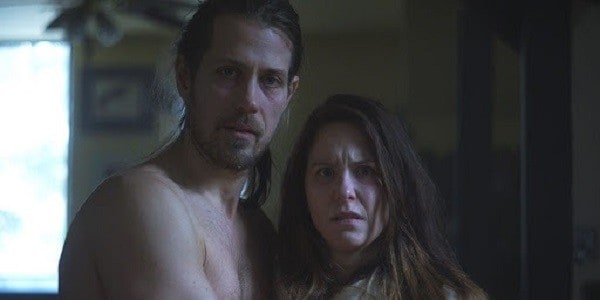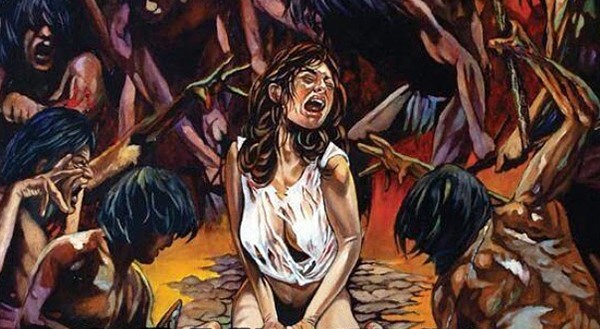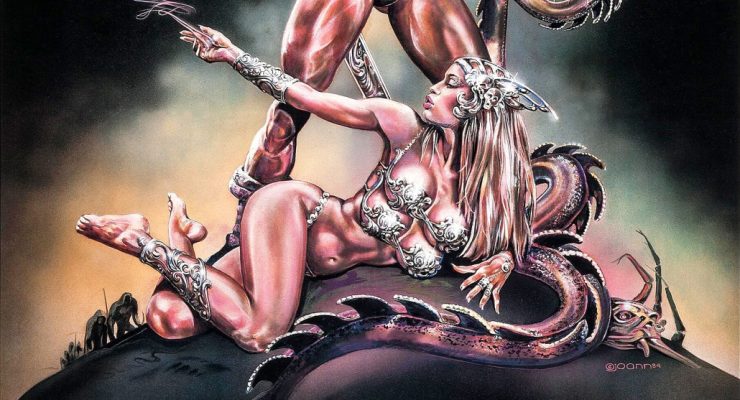What’s supposed to be a quiet vacation quickly turns into a horrific nightmare in Samuel Goldwyn Films’ new movie, Making Monsters. The film’s official synopsis reads: A social media prankster and his fiancée find their idyllic country weekend turn into the ultimate video prank, where the stakes are life and death. Making Monsters was written and directed by Justin Harding and stars Alana Elmer, Tim Loden, Jonathan Craig, Jarrett Siddall and King Chiu. There are many elements that stand out in the film, one of them being the cinematography by Stuart Cameron. To learn more about how the film was shot, we spoke with Stuart about everything from what sort of camera he used to how the big finale in the field was filmed. Read the exclusive interview below.
What sort of lens/camera did you use for shooting Making Monsters?
I’ve owned Red cameras forever, and since this film was shot on a micro budget, I donated the use of my Red Epic 6K Dragon as the A cam along with my lenses. We also used a Helium for the arial/drone footage and we had a second Dragon out for a few days to shoot some scenes with two angles to expedite the process. For lenses we used my Richard gale Optics Apogee lenses which are Russian Helios-44’s that have been rehoused and have had some modern optics put in to widen and tighten the field of view. The set consists of a 28mm, 38mm, 58mm and 88mm, all at T2.0. These lenses have since been rehoused again in Richards newest more durable Clavius housing. There was also a Cooke S4i 14mm kicking around on set for some of the special scenes. If I can remember, looking back at some BTS shots it looks like we were using a 1/4 and 1/8th pearlescent in the matte box to lower the contrast a bit more and soften the higher contrast scenarios – again because of the micro budget we didn’t have a huge grip and lighting package to fight the sun.
There is a lot of footage in the film that is supposed to from Chris’s personal camera when he is doing his pranks. What is the difference in how that footage was filmed, opposed to the other footage in the film?
Quite simply – that was the directors passion project, his wife was the lead actress, and to get the variety needed they spend quite a lot of time on their own time filming the ‘pranks’ on a GoPro. All the other video looking effects were done in post. For the night vision stuff, we used an old Sony handicam with infrared night vision, and all the other security camera footage was captured with GoPro’s and doctored in post. The Snorri cam stuff was shot with a BlackMagic cinema camera with a wide-angle EF Canon L-series lens.
How did you shoot the overhead sweeping shots? Like the opening one in the field. Was it with a drone?
This stuff was all shot with an Alta 8 with the Movi Pro hanging off the bottom holding onto a Red Helium DSMC2 body. We used the same Apogee lenses to match the feel. The closer stuff like the overhead of David laying on the field missing one arm, was shot with the movi on a short jib arm.
What was the most challenging shot in Making Monsters?
The whole project was challenging – as I mentioned, the project had a tiny budget, most of which went into the makeup and the rental of the Airbnb the cast stayed in next-door to the location. We all worked for free and all of the gear was essentially donated by crew. As for crew, I had a focus puller for one block, a gaffer for another and a sound guy. For lighting equipment, we had 2 light mat 4’s and 4 Quazar Crossfade 4’ tubes, an M18 and sometimes a Skypanel S30. So every scene was a balance of time and limited resources. A lot of the time I spent operating, pulling my own focus and lighting the scenes alone or with a helper.
But the most stressful or complicated scene was the final scene with Alison and David in the field – we shot this at the end of a long day in which we had already shot the entire chasing scene into the barn, the barn interior and the pitchfork FX shot/scene. We also did the ATV chase, the arial shots and then finally ended up with this overly complicated, heavily covered killing scene. To make it happen and have the immersive violently fanatic feel it needed, we ended up doing it as a single shot. And because of light, a single take. I’m not quite sure what we had to go back and pick up, but I think we either had to go back and do inserts of feet, but because of makeup, wardrobe, actors hair etc. they were forced to use the original and rely on the insert pickups for any cuts.
Because Making Monsters is a horror film, were you able to experiment more with shadows or angles?
Of course. The entire film was shot very very very dark with practicals and sometimes real moonlight as the only illumination. In the end there was a grade done, but a lot of the scenes were made much brighter, and again because of the budget I was not able to be involved in that process. The grade was done as a favour and it took care of a lot of the inconsistencies and problems with some colour shifts and balance, but there was no time to go for a particular look and see how to apply that feel to each scene. The one interesting thing that I tried to achieve, and I feel like we were able to do it quite well was the use of camera movement. It’s very subtle, and takes time, but as the story unfolds and the characters wake up into their new reality and their worlds start to unravel, we move from very static smooth camera movement to very loose and frantic handheld that gets more and more organic as the story progresses all the way until the end where we are inches away from the characters in a violent struggle to survive.
Can you talk about the scene where Allison is standing in the hallway and begins screaming as there is a monstrous object right in front of her. What did you use to create this shot? What technique did you use to speed up the camera towards her?
To be honest, you are not going to believe this, but I did that in one take. Its hand held, and I ran towards her on the 28mm lens and I pulled my own focus wide open and nailed it. We had no budget for anything fancy, so we did it practically and all my years of operating and pulling my own focus made it less difficult than it might sound. I think they tried to speed it up in post, but it looked fake, so I believe that shot is in real time.
You have carved out a niche in Toronto commercial and film industry as a DOP with a sharp eye for cutting edge visuals and poetic lighting. How did you become known for this specific style?
That’s kind of you to say, but it has not been an easy road. I tried for years to get into the commercial side of the industry with little to no success. I’d spent so many years working on doc and factual TV that I didn’t have a reel to showcase my work. But fortunately, a director that I had worked with years ago had become a very successful in commercials and he started having me out as second unit on some of his bigger profile jobs. With that experience I was able to form other relationships which led to doing some jobs on my own and I slowly started to build my reel. Unlike a lot of cinematographers, I’ve spent thousands of days by myself staring through a viewfinder trying to make something out of nothing without a team for support. I think these experiences have given me the tools that make me who I am as a cinematographer today, I’m different and my mantra and practices are definitely my own. I think that this has made me efficient at what I do and breeds its own kind of look and style. We can all learn a particular style, look or feel – these are techniques we can learn and master, but the more I collaborate with other DP’s and the more time I spend with new directors I appreciate what we all bring to the table, and how that collaborative force is the real magic in movie making.
What made you want to become a cinematographer?
My grandfather worked for Kodak, and because of that I have 76-year-old colour 16mm film of my father crawling. Even in that homemade film there is something magical about the light, the way it influences how I feel and how our memories, or at least mine, seem to have some reference to the time based on the feeling of the light. I’m not sure I ever really wanted to become a cinematographer, I just think I was drawn to that magic and how it affected my experiences and recollections of those moments. I was also quite interested in technology when I was a kid and so I spent a lot of time playing with cameras and started my path to capturing memories. Learning how to shape and control light came much later, and it’s still a process I’m learning and experimenting with.
Your work on the show Deals From the Dark Side has been nominated for a few awards. Why do you think the cinematography on that show particularly stuck out to viewers?
This show was shot almost 12 years ago and I think at the time we were doing something fairly innovative. We shot the show on the Sony F3 – the first attainable super 35 camera that was natively 23.98p which recorded HD internally in S-log with something like 12 or 13 stops of dynamic range. Most importantly for me, it had a PL mount so we were finally able to shoot this type of show on some proper lenses. This was a 2 camera doc style show, so I chose to shoot on two sets of Angenieux Optimo DP Rouge lenses that were originally sold as matched sets for 3D productions. To put this in perspective, the only other professional options at the time were ENG cameras with small chips and long news broadcast zooms, or the Canon 5D. But for a travelling show shot over the course of 8 or 9 months, this was far more production friendly option than the 5D. The viewers were finally introduced to the shallow depth of field and dynamic range that they saw in cinema which hadn’t quite made its way into factual TV at that time. Besides the technical choices we made to achieve these visual aesthetics, the lighting was also quite different from the Kino Flo style at the time. For travel we needed a small package that a crew of 3 could manage and set up. It also needed as much punch as we could get from a small house powered tungsten lights. So I chose to bring 4 Arrilite 750plus open faced focusable par lights. We kept the lights low on the stands pointing straight into a foam core bounce. That simple technique allowed us to have soft directional light so that both cameras could move around freely and capture the whole scene without relighting. Lighting a scene for cross coverage is quite a difficult task because the traditional position for your key light in one frame is directly in the background of your other frame. It took some getting used to, but when I look back at screen grabs of the show, I think it was a step in the right direction away from the stadium lighting and news cameras that were being used at the time, and I think that’s why it got the nominations and attention it did.
On what project do you think you learned the most from?
That is a hard question. I always have huge take aways from every job, things I’d do differently if I had to do it again, or new ways of doing things I’ve done a hundred times. I’ve worked on blockbuster features as a camera trainee, to massive reality shows running around the world chasing people for The Amazing Race, to shooting cooking shows, indie movies and commercials all over the world. What I’ve learned from all these very different and unique experiences is that you know less than thought, and the strength of any creative person is in their ability to excite and unite the people around them by being passionate and respectful and giving them ownership in the project by nurturing their input and ideas. Because although I’ve tried to do it all myself and gotten close, you really can’t make it alone.
You can learn more about Stuart Cameron here: http://www.stuartjamescameron.com/
Making Monsters is now available on VOD.














